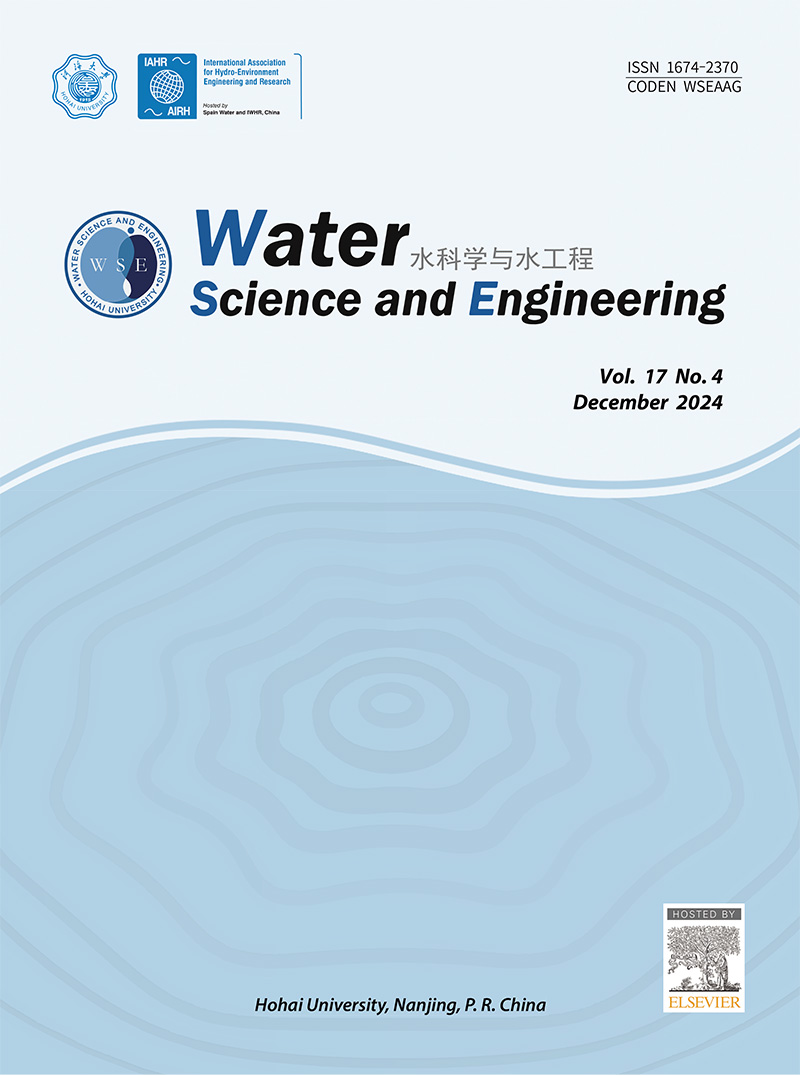Abundant and rare subcommunity assemblages of prokaryotes and eukaryotes controlled by vertical environmental heterogeneity in an urban reservoir
IF 4.3
Q1 WATER RESOURCES
引用次数: 0
Abstract
Reservoirs play a critical role in addressing water resources challenges. However, their vertical influence on the assembly mechanisms of different microbial communities, including prokaryotes and eukaryotes, remains unclear. This study examined the vertical diversity patterns of abundant and rare subcommunities of prokaryotes and eukaryotes in an urban reservoir, using water depth as a geographical gradient and employing high-throughput sequencing. The impact of vertical environmental heterogeneity on community structure was quantified, and key drivers of these dynamics were identified. The results indicated that the urban reservoir exhibited statistically significant differences in the vertical distribution of water temperature and oxidation/reduction potential. The α-diversity of the abundant subcommunity displayed an opposing vertical pattern compared to that of the rare subcommunity, while the β-diversity for both subcommunities of prokaryotes and eukaryotes increased with water depth. Moreover, the distinct diversity patterns of abundant and rare subcommunities were associated with environmental heterogeneity and species adaptability. Notably, the β-diversity of the rare subcommunity of eukaryotes was primarily driven by species turnover in surface water, whereas nestedness became the dominant factor in deeper water. Furthermore, eukaryotic microbes exhibited a more pronounced response to changes in water depth than prokaryotes, consistent with the importance of heterogeneous selection to the eukaryotic community. Water temperature significantly affected the community composition of all groups, highlighting its importance in shaping community dynamics. This study provides valuable insights into the vertical distribution and assembly mechanisms of microbial communities in urban reservoirs, contributing to the protection and management of aquatic ecosystems under river regulation.
受垂直环境异质性控制的城市水库原核生物和真核生物亚群落组合丰富而罕见
水库在应对水资源挑战方面发挥着关键作用。然而,它们对不同微生物群落(包括原核生物和真核生物)组装机制的垂直影响尚不清楚。本研究以水深为地理梯度,采用高通量测序技术,研究了城市水库中原核生物和真核生物丰富和稀有亚群落的垂直多样性格局。量化了垂直环境异质性对群落结构的影响,并确定了这些动态的关键驱动因素。结果表明,城市水库的水温和氧化还原电位垂直分布差异有统计学意义。丰富亚群落的α-多样性与稀缺亚群落的α-多样性垂直方向相反,而原核和真核生物亚群落的β-多样性均随水深的增加而增加。此外,丰富和稀有亚群落的不同多样性格局与环境异质性和物种适应性有关。值得注意的是,真核生物稀有亚群落的β-多样性主要受地表水物种更替的驱动,而在深水中,巢性成为主导因素。此外,真核微生物对水深变化的响应比原核生物更明显,这与异质选择对真核生物群落的重要性相一致。水温显著影响各类群的群落组成,突出了水温对群落动态的影响。该研究为了解城市水库微生物群落的垂直分布和聚集机制提供了有价值的见解,有助于河流治理下水生生态系统的保护和管理。
本文章由计算机程序翻译,如有差异,请以英文原文为准。
求助全文
约1分钟内获得全文
求助全文
来源期刊

Water science and engineering
WATER RESOURCES-
CiteScore
6.60
自引率
5.00%
发文量
573
审稿时长
50 weeks
期刊介绍:
Water Science and Engineering journal is an international, peer-reviewed research publication covering new concepts, theories, methods, and techniques related to water issues. The journal aims to publish research that helps advance the theoretical and practical understanding of water resources, aquatic environment, aquatic ecology, and water engineering, with emphases placed on the innovation and applicability of science and technology in large-scale hydropower project construction, large river and lake regulation, inter-basin water transfer, hydroelectric energy development, ecological restoration, the development of new materials, and sustainable utilization of water resources.
 求助内容:
求助内容: 应助结果提醒方式:
应助结果提醒方式:


